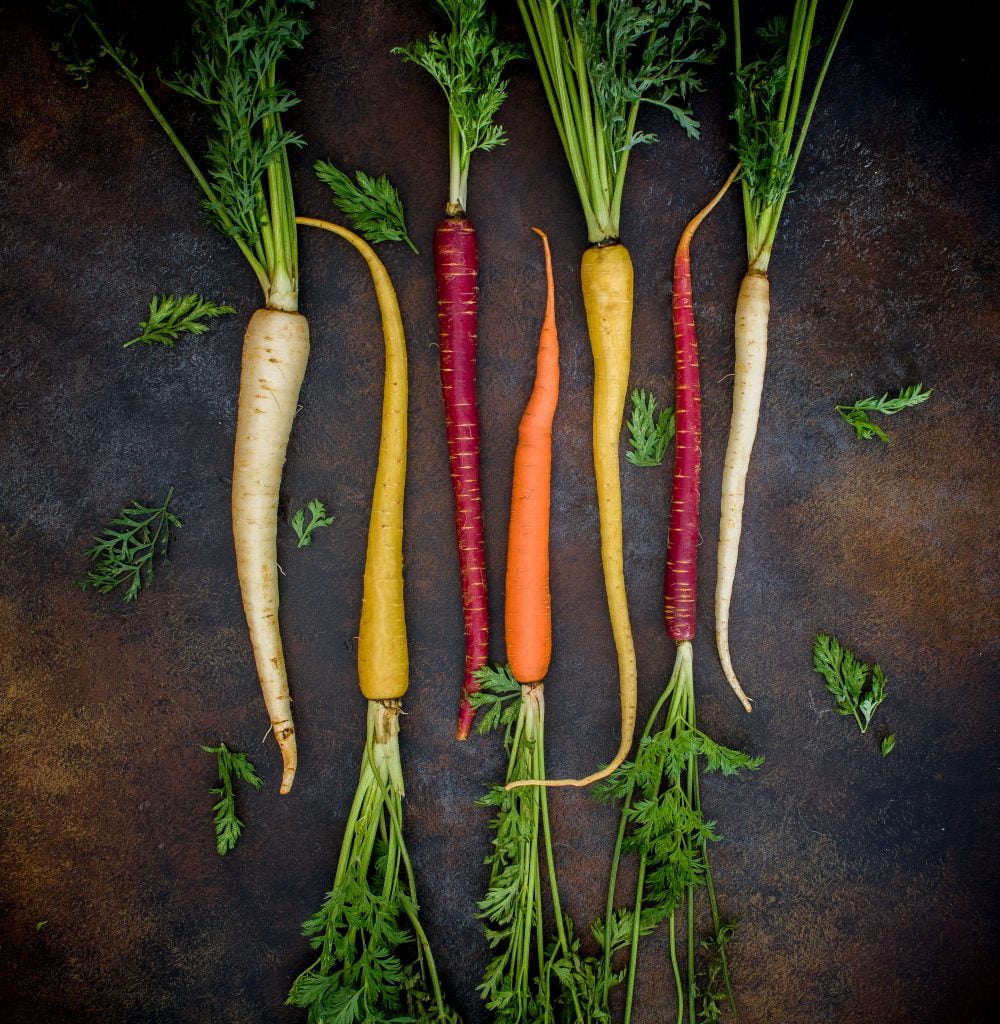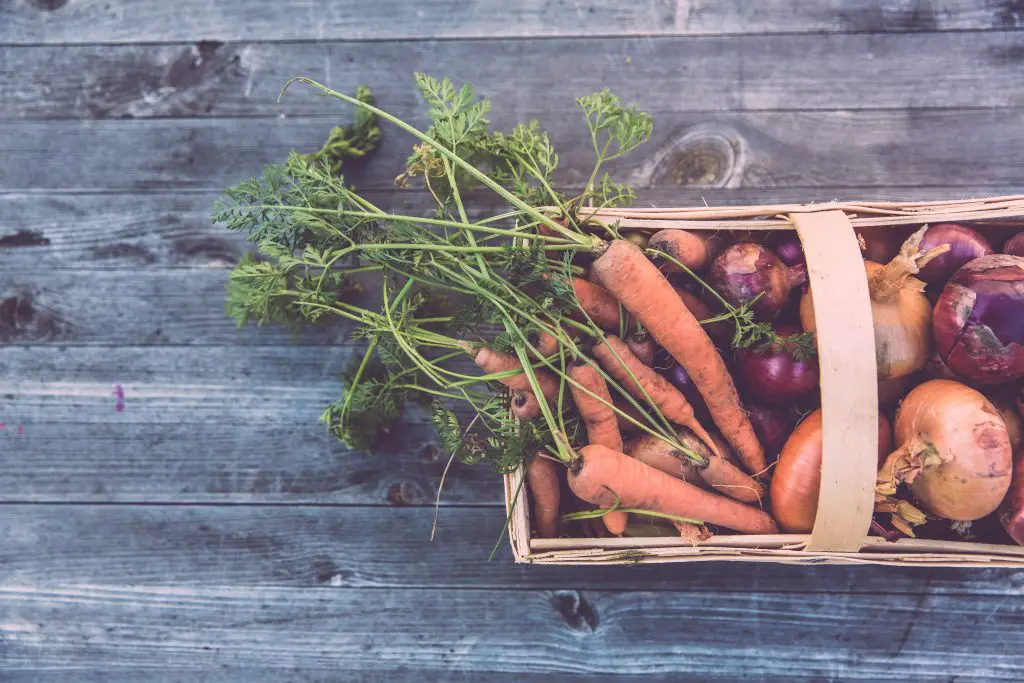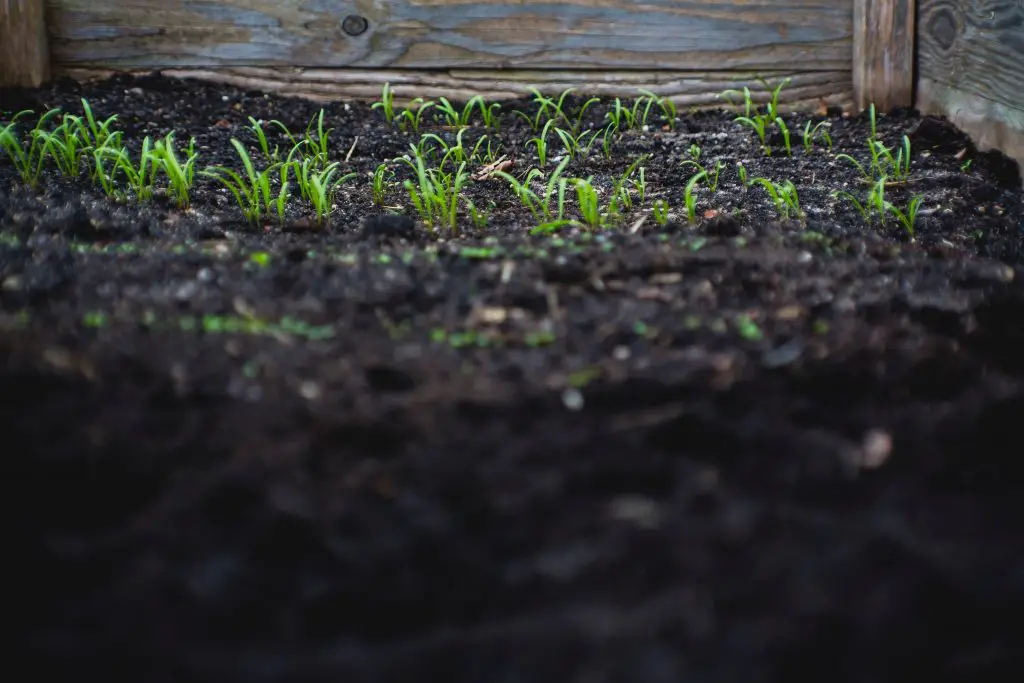Should You Fertilize Carrots? The traditional view when you talk to any experienced gardener is not to add fertilizer, particularly a nitrogen-based one when planting carrots. The reason for this view is that it is believed to increase the degree of forking. However, a relatively recent study has produced results that challenge that view.
A study from the University of Dhaka indicates that the addition of fertilizer is beneficial to carrots. There is up to a 67% increase in the size of the “marketable” harvest at the highest fertilizer addition rate. The rate of forking at this level of fertilizer is slightly elevated when compared to unfertilized carrots, 6.92% vs 5.84%. As the gain in yield far outweighs the slight increase in forking fertilizing is recommended.
Additionally, for the home gardener, who is not trying to sell the carrots, a small percentage of forked carrots is hardly the end of the world, as the forked carrots are as edible as straight carrots.

How Much Fertiliser Should Be Added?
The study from the University of Dhaka examined the effect of Nitrogen on growth at 3 different levels, 70, 100 and 130 g per square metre (0.23, 0.33 and 0.43 oz per square foot). The results shown in the table below indicate that the optimum level of nitrogen that needs to be added is approximately 100 g/per square meter (0.33 oz per square foot).
| Amount of Nitrogen | Yield (Tonne/Ha) | % Forking |
| None | 11.58 | 5.84 |
| 70 g/sqm (0.23 oz/sqft) | 15.46 | 6.04 |
| 100 g/sqm (0.33 oz/sqft) | 20.67 | 6.23 |
| 130 g/sqm (0.43 oz/sqft) | 19.36 | 6.92 |
As the nitrogen level varies between fertilizers it is necessary to calculate the weight of fertilizer required on an individual basis. This can be done by looking at the NPK value on the packaging of the fertilizer. The number is typically displayed as a ratio ie 10:20:13 or 10-20-13. In this example, it means that the fertilizer contains 10% Nitrogen, 20% Phosphorus, and 13% Potassium.
High Nitrogen (N) fertilizers generally thought to increase leaf growth while Phosphorus (P) is said to help the root growth. Potassium (K) is thought to aid in the production of flowers.
The weight of fertilizer required per square metre or foot may be calculated by dividing the amount of fertilizer by the 100g or 0.33oz depending on whether you are using the imperial or metric system, by the percentage of Nitrogen on the side of the bag.
There are many fertilizer types available you can use generally, however, those that are higher in Potassium and Phosphorus are recommended for Carrots. These types of fertilizers are often recommended for things like tomatoes as they encourage fruiting. One example of this type of fertilizer Jobe’s Organics 9026 Fertilizer which contains a 2-5-3 ratio and is available on Amazon.

How To Grow Carrots
Carrots are among the more challenging vegetables to grow for home gardeners because they are relatively difficult seeds to germinate. One of the main reasons for this is because the outer part of the seed contains a group of chemicals called Furamocoumarins that are designed to inhibit weed seeds germinating. This reduces the level of competition for the carrots but in the process also makes it more difficult for the carrots’ seeds to germinate themselves.
Due to the presence of the Furamocoumarins germination of the carrots is slow and will only occur in the presence of sustained moisture. This can be problematic as carrots are generally sown in relatively shallow dills, typical 1-2cm (0.5 inches). At this depth it relatively easy for the carrots seeds to dry out, particularly in warmer weather. This often leads to patchy germination or no germination at all.
To overcome this issue it generally recommended that carrots be presoaked in water prior to planting. This is best done by placing them on a damp paper towel for at least 3 to 5 days. The towel is best placed in an airtight container to ensure the seeds remain moist. To read more about this technique click here.

After soaking the carrots they should be sown at a depth of 2 cm (1 inch) into the soil. When sowing it is recommended that seeds are directly sown into the garden rather than into seed trays. The reason for this is that the carrots produce a long taproot that can be easily damaged when transplanted. Breaking of the taproot can cause the carrots to fork.
However, if you really want to sow into containers damage can be avoided by planting carrots into old toilet rolls. Once germinated the toilet rolls can be planted as a whole into the ground to avoid root disturbance. This is generally a lot more work and for that reason is not recommended.
A broad range of carrot seeds are available from the heirloom seed specialist Seeds Now based in the US or from Thompson & Morgan based in the UK. Alternatively, large mixed packets with a wide range of carrot varieties blended can be purchased from Amazon. (See Rainbow Mix Carrot Seeds by MySeeds.Co.)
When planting carrots out into the garden they prefer a sunny location but will tolerate partial shade. The soil should ideally be loose and free draining. To avoid any chance of root deformation it is best to remove any plant debris or stones from the soil.
Carrots are best sown in Spring or Autumn, to avoid the worst of the summer heat. The high temperatures in summer increase the rate of drying which will, in turn, affect the rate of germination.
When making a furrow for planting the seeds it is best to soak the soil prior to planting and also after sowing. It is also important to water regularly during the growing season as period of dryness will sometimes cause the carrots to split as they mature.

As the Carrots mature it will sometimes be necessary to take an initial harvest of baby carrots. This is necessary to ensure that that there is adequate space for the roots to develop. When thinning plants it is best to do this gently to avoid disturbing the roots of the Carrots left behind.
Carrots may be harvested as needed because they are happy to remain in the ground for a lengthy period of time.
Storage
It is only necessary to remove carrots from the garden if the soil becomes too wet during winter or the ground begins to freeze. Very wet soils increase the risk of rotting while in frozen ground carrots can be difficult to get out of the ground. In regions with mild Winters, it is best just to leave them in the ground until you need them.
In places where the carrots need to be removed, they can be stored in the refrigerator for up to a month. If long-term storage is required, they are best stored unwashed in damp sand. Storage in sand mimics the conditions in the ground.
When stored in this manner in a dark, cool, well-ventilated area, the carrots will last up to 5 or 6 months. Alternatively, carrots can also be blanched and then frozen.
Related Articles
How Many Carrots Grow From One Seed?
Tricks To Planting Carrot Seeds That Really Work
12 Tips To Boost Your Garden Output
10 Ways To Make Your Vegetable Garden Look Beautiful
